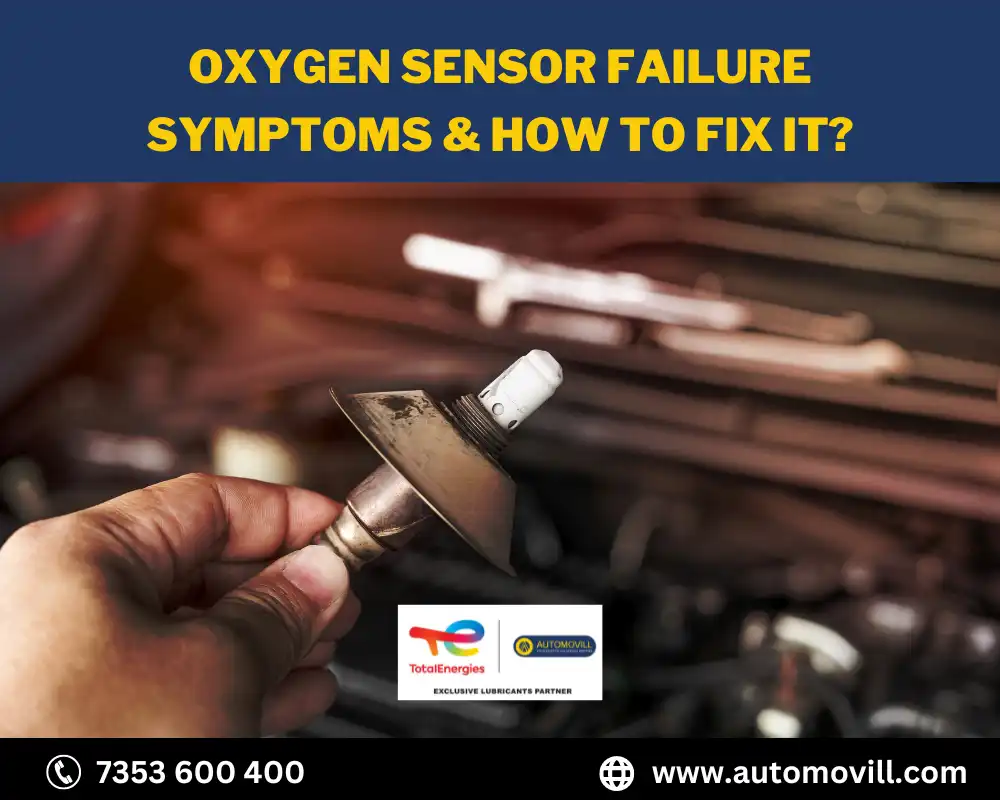
The primary function of the oxygen sensor, also known as the O2 sensor, is to monitor the amount of oxygen in the exhaust gases and passes the information to the engine’s control unit (ECU) to maintain the right balance of air and fuel for optimal performance.
However, over time, the oxygen sensor can start to wear out and cause problems with how your vehicle runs. It’s important to be able to recognize the signs of oxygen sensor failure so that you can take action and keep your vehicle in good shape.
Understanding Oxygen Sensors
Before delving into the symptoms of oxygen sensor failure, it’s essential to grasp the basics of how these sensors function. Oxygen sensors are typically located in the exhaust system of a vehicle, either in the exhaust manifold or the exhaust pipe. There are usually two types of oxygen sensors:
- Narrowband Oxygen Sensors: These sensors produce a voltage output that fluctuates between 0.1 and 0.9 volts. They are primarily responsible for monitoring the air-fuel ratio.
- Wideband Oxygen Sensors: These sensors provide a more accurate and broader range of voltage outputs, usually between 0 and 5 volts. They are commonly found in newer vehicles and are crucial for precise air-fuel mixture control.
Symptoms of Oxygen Sensor Failure
When an oxygen sensor starts to fail or malfunctions, it can have a noticeable impact on your vehicle’s performance. Here are some common symptoms to look out for:
- Check Engine Light (MIL) Illumination:
- One of the most common indicators of an oxygen sensor problem is the illumination of the Check Engine Light (MIL) on your vehicle’s dashboard. It serves as a general warning that there is an issue with the engine management system, which could be related to the oxygen sensor.
- Poor Fuel Efficiency:
- A failing oxygen sensor can disrupt the air-fuel mixture, leading to poor fuel combustion. This can result in decreased fuel efficiency, causing your vehicle to consume more fuel than usual.
- Rough Engine Idle:
- A faulty oxygen sensor can cause irregular fluctuations in the air-fuel ratio, leading to a rough idle. You may notice that your vehicle’s engine is running unevenly or experiencing intermittent stalling.
- Engine Misfires:
- An oxygen sensor failure can contribute to engine misfires, which occur when the air-fuel mixture ignites improperly or at the wrong time. This can lead to a lack of power, rough running, and potential damage to the engine if left unaddressed.
- Reduced Engine Performance:
- As the oxygen sensor fails, the ECU receives inaccurate data about the air-fuel ratio, resulting in reduced engine performance. You may notice a decrease in power, sluggish acceleration, or difficulty maintaining speed.
- Increased Emissions:
- Oxygen sensors play a crucial role in controlling the emission levels of your vehicle. A failing sensor can cause the engine to run too rich or too lean, leading to increased emissions of pollutants such as nitrogen oxide (NOx), carbon monoxide (CO), and hydrocarbons (HC).
- Failed Emissions Test:
- When your vehicle undergoes an emissions test, a malfunctioning oxygen sensor can cause it to fail the inspection. If you notice a failed emissions test, it’s essential to have your oxygen sensor checked and replaced if necessary.
How To Fix Oxygen Sensor Issues
If you suspect that your vehicle may be experiencing oxygen sensor failure based on the symptoms mentioned above, it’s crucial to have the problem diagnosed and resolved promptly. Here are some steps you can take:
- Consult with an Experienced Mechanic:
- If your check engine light is illuminated or you notice any of the symptoms associated with oxygen sensor failure, it’s advisable to consult with a qualified mechanic. They can use diagnostic tools to retrieve error codes from the vehicle’s ECU and perform further inspections to rectify the issue accurately.
- Replace the Faulty Oxygen Sensor:
- Once the problem has been identified, it is typically recommended to replace the faulty oxygen sensor. It’s important to use a high-quality sensor that matches the specifications of your vehicle’s make and model.
- Regular Service:
- To prevent oxygen sensor failure and ensure optimal performance, it’s crucial to follow your vehicle manufacturer’s recommended maintenance schedule. Regularly scheduled maintenance can help detect and address potential issues before they escalate.
Conclusion
Recognizing the symptoms of oxygen sensor failure is essential for maintaining your vehicle’s performance and minimizing emissions. By being aware of the signs discussed in this blog, you can take prompt action and prevent further damage.
Remember, consulting with a professional and addressing the issue promptly will help keep your vehicle running smoothly and efficiently, ensuring a safer and more eco-friendly driving experience.
